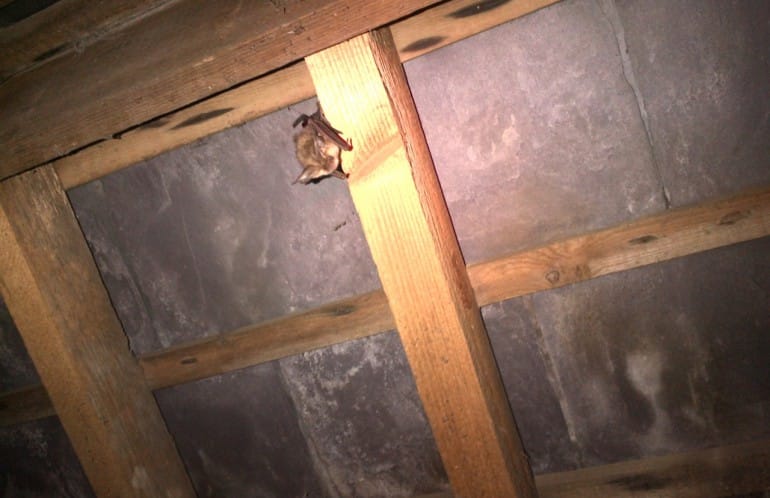Background
A local resident contacted Arbtech regarding a preliminary bat roost assessment for their property. They had submitted a planning application for an extension and modifications to their home and the planning authority, Chichester District Council, had requested a bat survey.
These initial bat assessments need to be carried out early on in the planning process and should always be required by the planning department before they can give planning consent.
About the area
Ifold is a rural village surrounded by ancient woodland and pasture with a strong hedgerow network which provides a perfect habitat for bats. There are particular bat hotspots in the area where there are a high proportion of bat roosts in buildings.
The local area and habitat are of such high quality, that it even supports two of our rarest bat species; Bechstein’s and barbastelle bats.
Preliminary roost assessment (PRA)
The site survey consists of an internal inspection of loft voids and an external inspection of all external features. The inspection of the loft void looks for evidence of bat use such as droppings and staining, and possible access points into the loft.
The loft inspection can sometimes rule out the presence of certain void dwelling bat species such as brown long-eared bats.
This species is often found in residential lofts and roost along the ridge beam and at hip apexes. Where they have been roosting, and where they fly up and down the loft prior to emergence at dusk, they will leave droppings scattered throughout the loft with particular concentrations under main roosting points and under the ridge beam.
The external inspection looks for small external holes that could not only be used to enter the loft but could also be used by small crevice dwelling bats such as pipistrelles.
This group of bats exploit small external gaps in buildings and do not generally come into large voids. This makes it very hard to find evidence of these species as most if not all evidence is trapped within the crevice. An example of this would be a gap under a roof tile which lead to the small area between the roof tiles and roof felt, or beneath a vertical hanging tile.
In this case, the survey results showed that there was a small, non-breeding roost of void dwelling bats in the loft. The species was confirmed as brown long-eared bat through DNA analysis.
Once the bat roost was confirmed this was discussed with the client, and it was decided that the plans would be adjusted so that any direct impacts to the roof where the bat roost is present would be avoided. This allowed for an alternative to the usual dusk emergence and dawn re-entry surveys that would usually be required.
Bat Mitigation Plan (BMP)
When it can be demonstrated there will be no direct impacts on the bat roost, and secondary impacts such as noise and vibration can be mitigated using a detailed method statement, it is not necessary to carry out further dusk emergence and dawn re-entry surveys and obtain a European protected species mitigation licence.
In this case, the risks can be managed by creating a bat mitigation plan which will be built into a planning condition and must be followed to the letter.
The bat mitigation plan breaks down all elements of the proposed works, including tools and methodologies, and addresses each one in relation to risks to the bat roost. Where any risks are identified, these are mitigated through measures such as restriction of tool use such as hand tools only in certain areas, and through the timing of the works to avoid the period where bats are likely to be present.
Other elements of the mitigation plan include signage on the loft hatch indicating that a bat roost is present, and the loft must not be entered by non-licenced persons, lighting mitigation and the installation of bat boxes on site.

